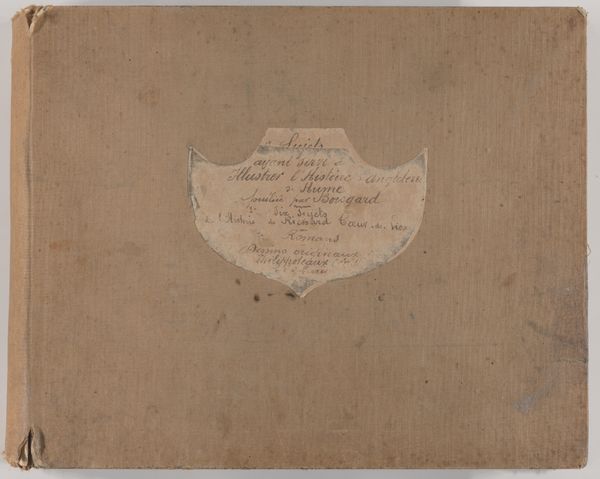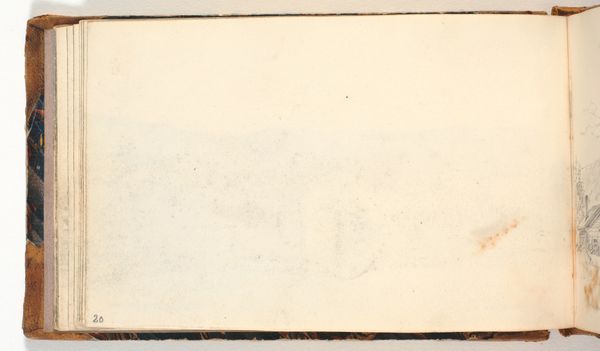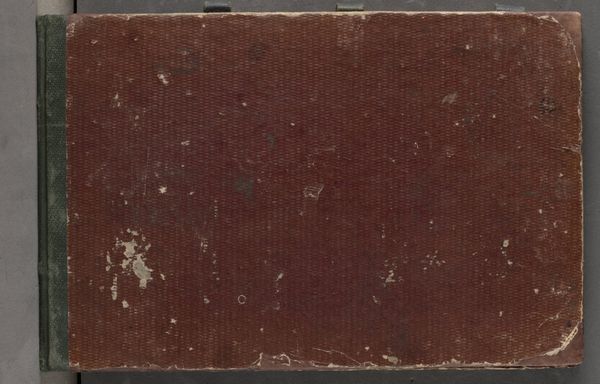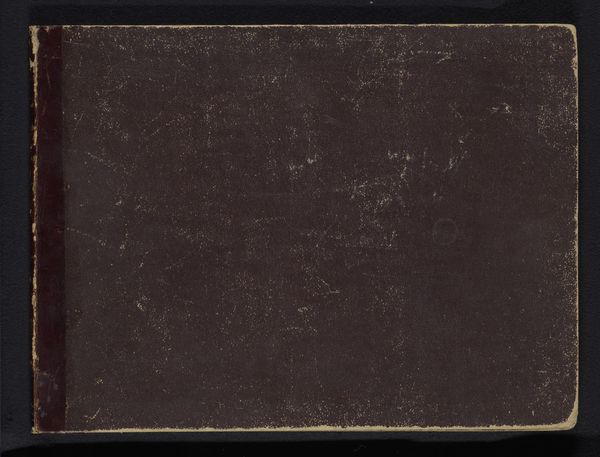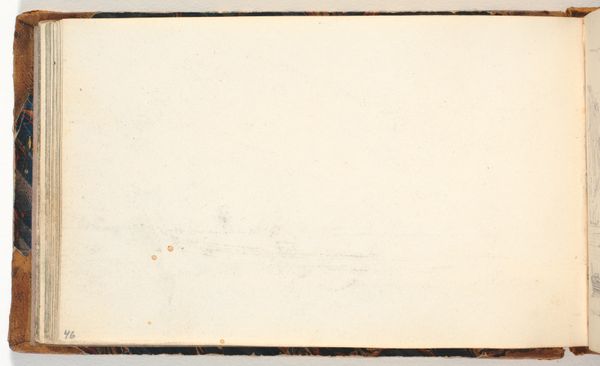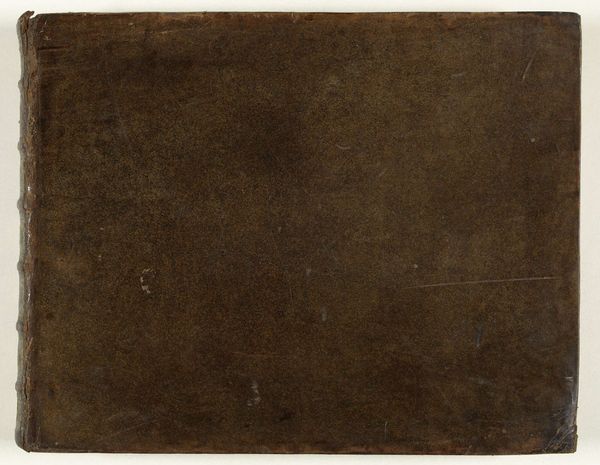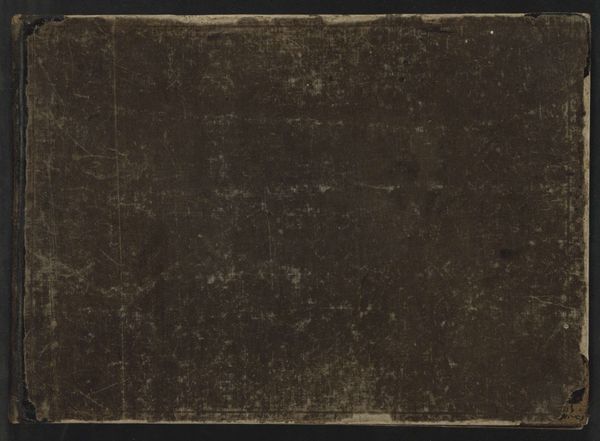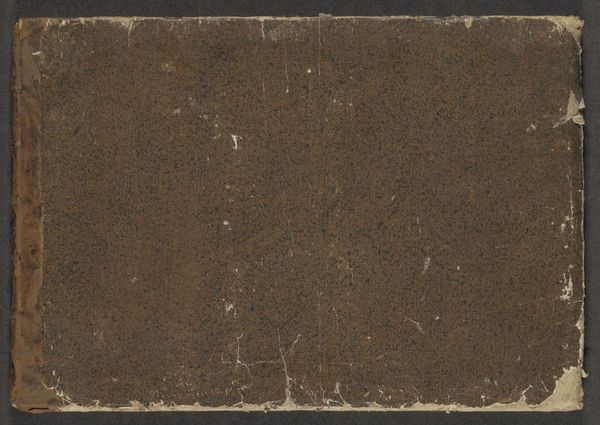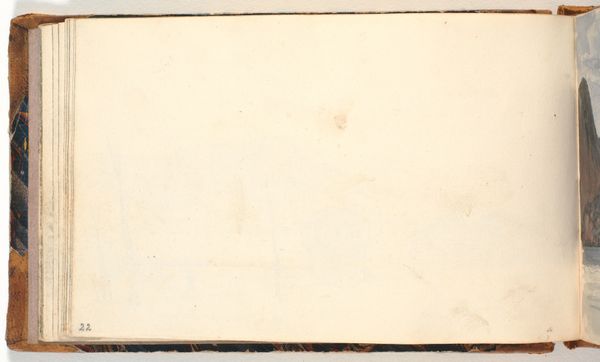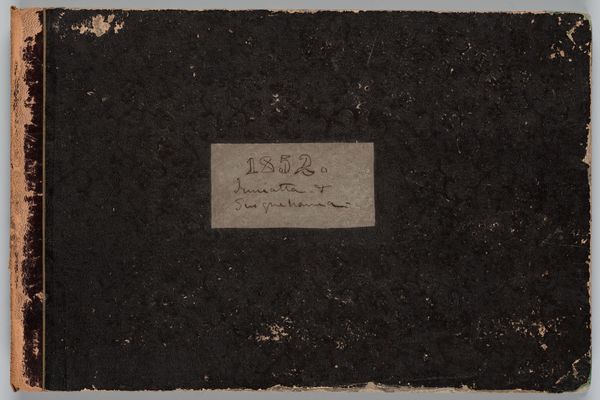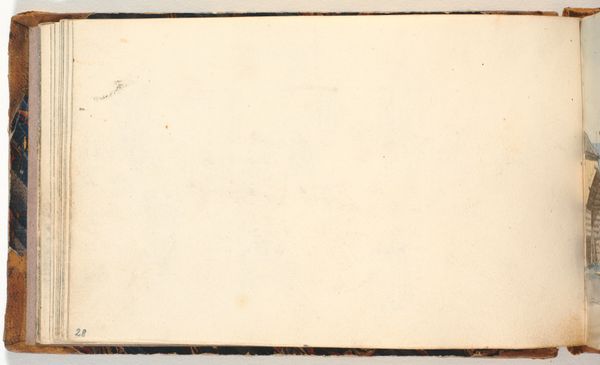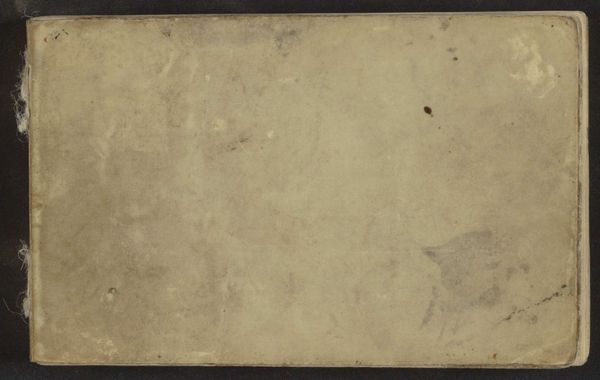
Copyright: Städel Museum, Frankfurt am Main
Curator: Let’s examine this sketchbook, aptly titled “Skizzenbuch,” by Georg Christian Wecker, dating back to 1867. It resides here in the Städel Museum's collection. Editor: The sheer intimacy of this object strikes me. There's an aura of privacy about it; one can almost sense the artist's hand hovering over the pages, capturing fleeting moments, emotions, or observations. Curator: Indeed, it is made of pencil, colored pencil, and mixed-media drawings—a visual record of Wecker’s creative process and daily encounters during the Romanticism era. The materiality is as interesting as the content. Look at the subtle gradations and contrasts of light and shadow. Editor: The choice of mixed media is itself a statement. Was this practical—the ready availability of these different drawing tools? Was this a financial imperative due to cost considerations? Or was Wecker consciously exploring the interplay of diverse materials, allowing for freedom of expression not easily attainable otherwise? How did the role of landscape affect or represent burgeoning Frankfurt urbanization and industrialization at the time? Curator: Note also how Wecker engages with tonal variations and compositional arrangements within this private journal. The structural harmony evident speaks volumes. Editor: Wecker was actively negotiating a new relationship to the external world by framing it in the context of the inner world. I wonder how much of that Romantic sensibility came through in Frankfurt, and the social constraints there. This was only one year after the Austro-Prussian war. Curator: The very existence of this "Skizzenbuch" in itself attests to the intrinsic artistic intention, with consideration given to aesthetics. Editor: For me, these considerations underscore art’s vital function to document shifting cultural paradigms. These sketchbooks served as conduits, relaying crucial information between art historical scholarship, period literature, and a desire for contemporary theory. Curator: Well, our viewpoints, while different, enrich how we understand its structural form and cultural position. Editor: Indeed, let's hope our dialogue inspires others to engage with this captivating "Skizzenbuch."
Comments
No comments
Be the first to comment and join the conversation on the ultimate creative platform.
